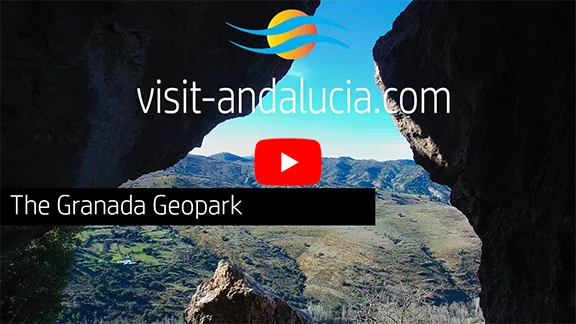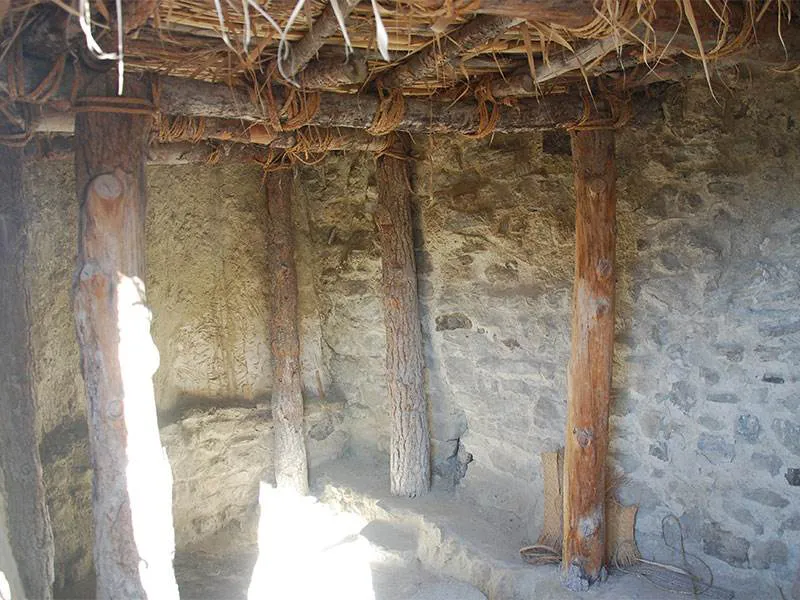Castellón Alto is an Argaric settlement in the Granada Geopark near Galera in Granada province. Occupied between 1900 and 1600 BC
By Nick Nutter | Updated 11 Apr 2023 | Granada | Places To Go |
Login to add to YOUR Favourites or Read Later


Castellon Alto
Between about 2200 BC and 1550 BC, the inhabitants of an area that roughly covered the modern-day province of Almeria and extended through eastern Granada and into Jaen province developed an expertise in using bronze, particularly for weaponry, and sophisticated pottery and ceramic techniques. They also mined and worked silver and gold. Their burial rites differed from previous peoples. The tholos tomb was abandoned in favour of individual burials in cysts, often beneath the occupied dwellings. As far as can be established from examination of the deceased, there were three levels of society, the upper class who dispensed favours and rewards to a middle class who were responsible for trade, storing surplus food, collecting tithes and the safekeeping of metallic tools, implements and weapons, and a lower class who were basically slaves. The refinement of their work in metals and pottery allowed these people to extend a trading network established by their predecessors, the people of Los Millares. These people are known today as the Argaric people and their culture is called the Argar culture. About 1900 BC the Argaric people built a fortified settlement near Galera in Granada province.


Argaric culture (Map courtesy Archaeological Museum Galera)
On a craggy spur on the banks of the river Castillejar, near the modern town of Galera in Granada province, is an Argaric settlement site called Castellón Alto. The site covers about half a hectare and overlooks a fertile plain known as the Baza – Huescar plateau. Castellón Alto is one of four Argaric sites in the valley, each separated from the other by 2 or 3 kilometres. The other three identified settlements are named Middle Castellón, Lower Castellón and Loma de la Balunca. At its height, Castellón Alto housed about 80 inhabitants. The settlement was established around 1900 BC, developed and grew until about 1600 BC, at which time it was abandoned.


Reconstrution of Castellon Alto
The settlement was built into the spur. Terraces were cut out of the rock to provide a flat surface on which the houses were built. A low stone foundation course sat on the bedrock. Posts, made of pine supported the walls and roof. The posts were set in the bedrock and held firmly in place with wooden wedges. Two further posts acted as door jambs, the door itself being an esparto grass mat. The walls were cane or interwoven branches of tamarisk, broom, poplar, willow or rushes, bound together with mud or gypsum plaster. The flat roof was a frame of pine supporting interwoven material thickly impregnated with mud that then baked in the sun. The inhabitant’s position in the social structure determined on which terrace they lived. The construction of the settlement, around a buttress of rock, made defence easy, the whole structure resembles a fortress.


Terraced housing
Three types of burial are recorded. The first is a ‘cave’ burial. An oval hole was dug into the rock at the back of the dwelling. This opened into a small oval cavern about 1 metre long. The entrance was sealed with flat sandstone slabs and small stones, or sometimes logs and wooden planks and very occasionally, brickwork.
The second type were ‘vertical’ burials. In this version a vertical shaft beneath the floor of the dwelling widened into a cavity.
The third type was reserved for very young children who were placed in a funerary jar and placed in simple graves.
As a matter of interest, towards the end of the Argar period, the majority of all burials consisted of the body being placed in a pithoi before burial.
The corpse would be bound in a foetal position and covered in a shroud. Grave offerings depended on rank and consisted of arms, tools and stone, bone or metal adornments together with jars of food and drink. One grave within the acropolis was that of a male. He was accompanied by a bowl, a carinated jar, a halberd and a short copper sword. Clearly a man of substance within the community.


Video By: Julie Evans


Cyst burial at Castellon Alto
Crowning the settlement is an area called the Acropolis. This walled area enclosed the dwellings of the community leaders. A total of nine graves, all cyst type burials beneath the dwellings, have been found within the Acropolis, compared to a total of 130 tombs on the whole site. One of the Acropolis tombs contained a bowl, a carinated jar, a halberd and a short copper sword, all indicating the high position held by the deceased. Unfortunately, the other tombs on the Acropolis have been affected by erosion and clandestine digging. The Acropolis had its own cistern that would have been kept topped up by the serfs. Naturally, the serfs themselves had to bring their own water from the river.


Reconstruction of Argaric house
As with modern towns, the settlement was not full built to start with, rather it developed over the whole period of occupation. The various phases of construction are well explained at Castellón Alto. The majority of the site is well preserved and a huge amount of information has been gleaned about the Argar people and their culture. Anthropological study has shown that the people of Castellón Alto were typical Mediterranean, of average height and slim build. The average height of a man was 1.67 metres and that of a woman 1.57 metres. A new-born child could expect to live about 23 years with only 3.5% surviving to the age of 60 years. The diet was primarily vegetarian with a little meat. Not unexpectedly the upper echelons of society tended to live longer and eat more meat.
The reason for the abandonment of Castellón Alto is not definitely known. It anticipates the breakdown of the whole culture by some 50 years, a final breakdown probably caused by the unsustainable social structure created by the Argar elite. Or this specific abandonment may have been a planned relocation, a pattern adopted by other Neolithic societies in Europe, that has more to do with the productivity of the land than social tension.
During the early Argar period, extending down the valley sides beneath the settlement, to the irrigated land along the river, was a thick growth of holm-oak and Aleppo pine. The Argaric people denuded the valley sides of trees that they used for fuel and building. The cleared land was then used for growing crops. After many years the land was exhausted and could not produce the food necessary to sustain the settlement. It is possible that this is the reason for the abandonment of Castellón Alto after only 300 years.
Tours of the site are conducted and occur at set times and days that vary throughout the year. Please check with the official website for opening times. The numerous informational plaques around the site are, unfortunately, only in Spanish, which is a pity because they display masses of information. The guide also only speaks Spanish. However, if when you book the tour, you ask for information in English, you will be presented with a plastic folder containing 16 sheets of A4 paper, each one a translation of the information on the plaques.
A geoparque (geopark or geoparc) is a well-defined territory, home to a valuable natural geological heritage. The most important parts of a geoparque, due to their scientific, aesthetic, or educational value, are called geosites.
In the north of Granada, surrounded by some of the tallest mountains of the Iberian peninsula, what we know today as the Basin of Guadix or the Guadix - Baza depression or basin was, for 5 million years, a lake with no outlet to the sea. Sediments, brought down by the mountain streams, were deposited in the basin in horizontal sheets. 500,000 years ago the basin drained to the west and new streams carved out the canyons, ravines and badlands that characterise the area, the most southerly desert in Europe, today.
Castellón Alto is a geosite due to it being the archetypical example of an Argar fortified settlement.
Please check website for opening days and times